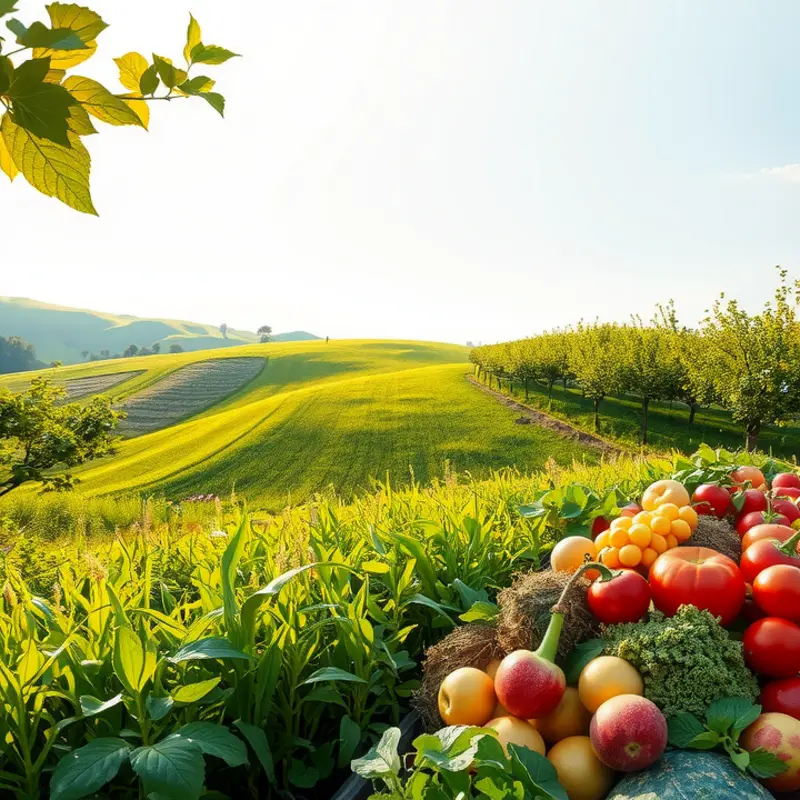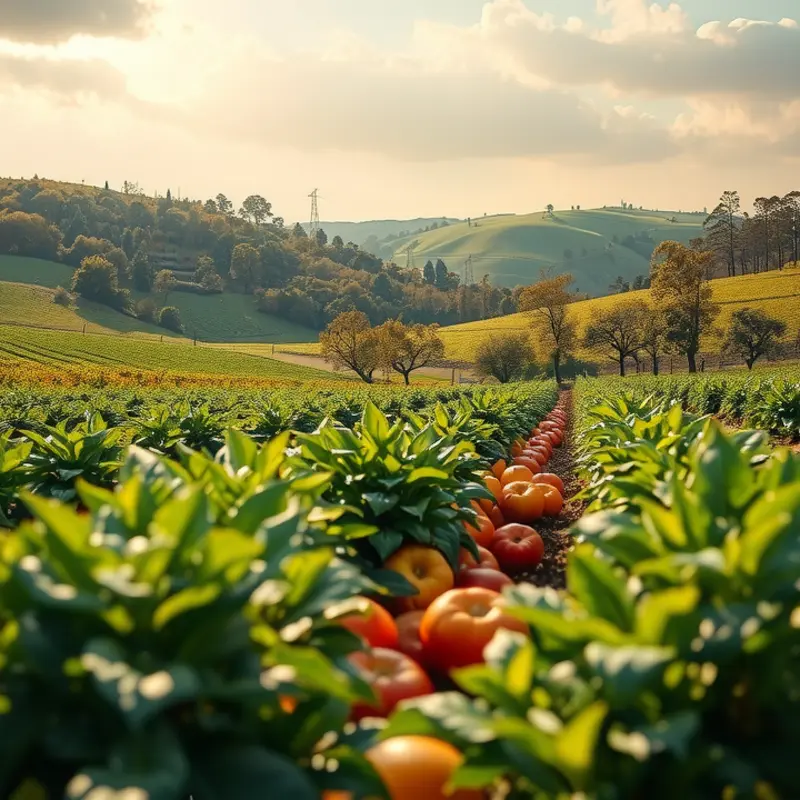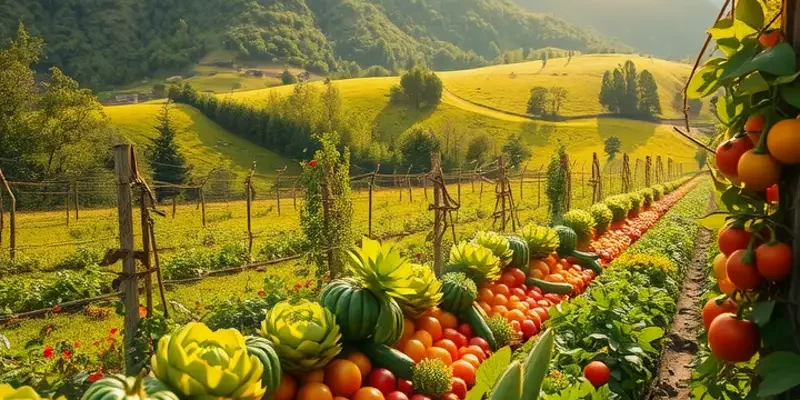Around the world, festivals are woven into the fabric of culture, united by one remarkable thread: food. As a medium of celebration, festivals showcase the rich culinary traditions of different regions, highlighting local ingredients, cooking methods, and ancient recipes passed down through generations. From the fragrant spices of Indian Diwali to the hearty stews of Oktoberfest, festival foods reflect the essence of community and tradition. Join us on this flavorful journey through the vibrant culinary landscapes of worldwide festivals.
The Sweet and Savory of Cultural Celebrations

Festivals around the world are an irresistible tapestry of stories, rituals, and most importantly, flavors. Each culture brings to the table a spellbinding array of dishes, bridging the gap between the sacred and the ordinary, the local and the universal. From the bustling streets of Bangkok to the quiet corners of a Scandinavian home, the sensory symphony of food plays a central role in any festivity.
In India, the festival of Diwali dazzles not just with lights but with culinary delights as well. Savory snacks, such as samosas filled with spicy potatoes and peas, and sweet treats like gooey, syrup-soaked gulab jamuns, are prepared in abundance. Each family has its own variation, passed down through generations. These culinary traditions are not just about taste but also about making connections and sharing warmth during the festival of lights.
Travel to Italy, and you will find that Christmas is celebrated with a grand feast. The Italian tables brim with tortellini filled with flavorful meats and rich cheeses, swimming in broths as warm as the Italian spirit. Panettone, a sweet, fluffy bread dotted with raisins and candied fruits, crowns the dessert lineup. Food here acts as a reminder of abundance and blessing, each bite steeped in tradition and good cheer.
Further north, in Denmark, the Christmas season beckons with æbleskiver, a delightful treat akin to doughnut holes, though significantly lighter and more airy. These are enjoyed with powdered sugar and jam, a marking of the dark yet comforting Danish winters. For the savory palette, there’s flæskesteg, a glorious roast pork adorned with crispy crackling, uniting families around a shared meal and reminding them of their culinary heritage.
In Japan, the spring festival of Hanami, or cherry blossom viewing, is elevated by the presence of special foods. One prominent dish is sakura mochi, a sweet rice cake wrapped in a salty cherry blossom leaf, embedding the seasonal floral aroma right into the culinary experience. Informal picnics under the cherry blossoms are adorned with colorful bento boxes, each compartment holding beautifully arranged bites, from tempura to seasonal sushi, emphasizing nature’s bounty through taste and presentation.
Eid al-Fitr, marking the end of Ramadan, is celebrated across the Islamic world with a banquet of sweet and savory foods. In the Middle East, ma’amoul steals the show— buttery shortbread pastries filled with dates, nuts, or figs. In South Asia, biryani, a fragrant, spiced rice dish, becomes the centerpiece of family gatherings, its rich aroma lingering as heartfelt conversations unfold. Eid is a time when diversity in cuisine reflects unity in celebration.
One cannot overlook the richness of Mexican celebrations. The Day of the Dead, or Dia de los Muertos, honors departed loved ones with a festive spirit and vibrant dishes. Families prepare “pan de muerto,” a sweet, eggy bread marked by crossbones on top, bringing sweetness to the act of remembrance. All over Mexico, altars adorned with food and drink serve as both offerings and reminders of life’s interconnectedness.
This global kaleidoscope of festival foods tells a story far bigger than individual flavors. It reveals how deeply ingrained culinary traditions shape our festivals, offering a shared sense of identity and belonging. To explore more about the fascinating connections between culinary traditions and cultural identities, see this article on culinary influences and trade.
Tradition and Transformation: Festival Foods Through Time

The fabric of festival foods is woven with threads of history, yet it dynamically adapts to modern times. These culinary traditions are anchored in culture but constantly react to societal transformations and global exchanges.
Historical cuisines often mirrored the regional availability of ingredients and local tastes. Consider the original Mediterranean Christmas table laden with roasted lamb or fish, distinctly seasoned with rosemary and olive oil. Today, these ingredients might find themselves mingling with global flavors, like teriyaki or chimichurri. This blending of tastes and techniques signifies a broader acceptance and celebration of culinary diversity, showcasing how festival foods evolve while respecting their cultural heritage.
The transformation of festival foods is not just about flavor integration but also about adapting to new societal norms. Dietary preferences and health consciousness shape the modern food landscape. The increasing popularity of plant-based diets has influenced traditional recipes. For example, where butter was key in European festive pastries, you might now find plant-based oils or purees as alternatives. These adjustments cater to a growing audience conscious of health and ethical considerations, emphasizing how festival foods stay relevant to contemporary palettes.
Globalization acts as both a catalyst and a bridge in the evolution of festival foods. As people migrate, they bring with them their culinary customs, leading to hybrids that retain authenticity yet reflect the new cultural milieu. Take, for instance, the adoption of spices like cumin and coriander introduced through trade routes, now integral to global holiday cookbooks.
Culinary influence through trade isn’t a new phenomenon. Historical trade routes were conduits for introducing spices like cinnamon and saffron to European Christmas markets, once considered exotic and now staples in holiday baking. A detailed exploration of how these routes have historically impacted global cuisine can be found here.
Technological advancements also play a role in the modernization of festival foods. The ease of communication and travel propels quicker cultural exchanges and recipe sharing. Techniques like fermentation, once a regional secret, can now be adapted and shared across continents in real-time, inspiring innovative approaches in preparing age-old dishes.
While innovation is key, festival foods remain a vessel of tradition. They are powerful symbols of cultural identity, seasoned over generations, yet always ready to embrace the new. As these foods transition over time, they carry forward the essence of celebration, rooted in shared history and evolving in the promise of future feasts.
Final words
As we traverse the rich tapestry of global festivals, it becomes clear that food is more than mere sustenance; it represents community, heritage, and joy. From the exhilarating flavors of street food to the sweets that symbolize prosperity and hope, each dish tells a story steeped in history and tradition. By savoring these festival foods, we engage with cultures beyond our own, fostering understanding and appreciation. Embrace the flavors of the world and consider how you can bring a slice of these rich culinary traditions into your next celebration.








